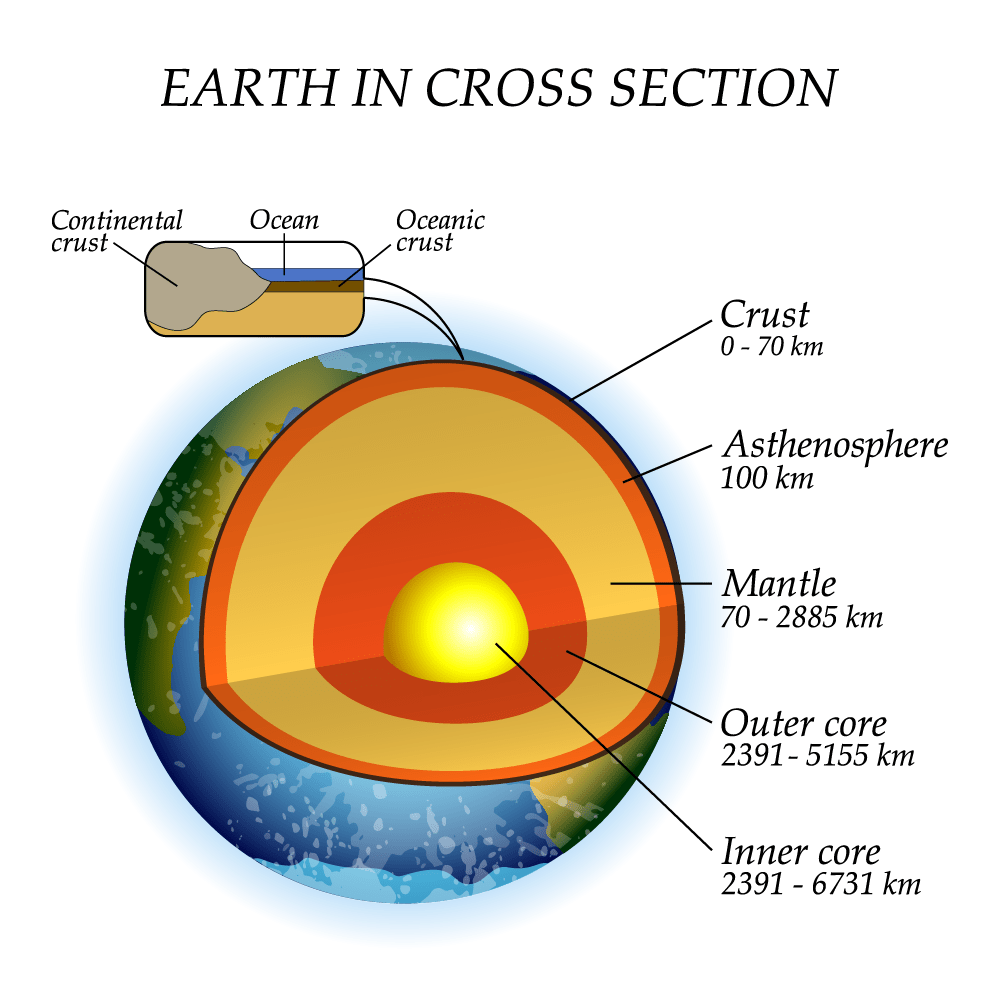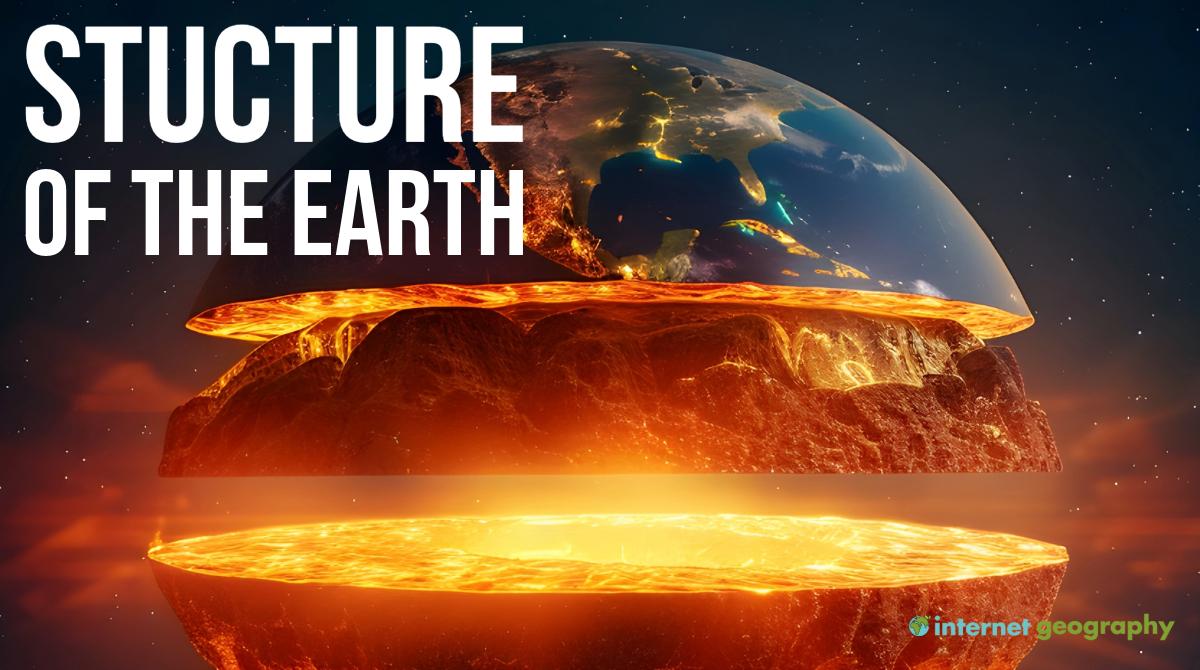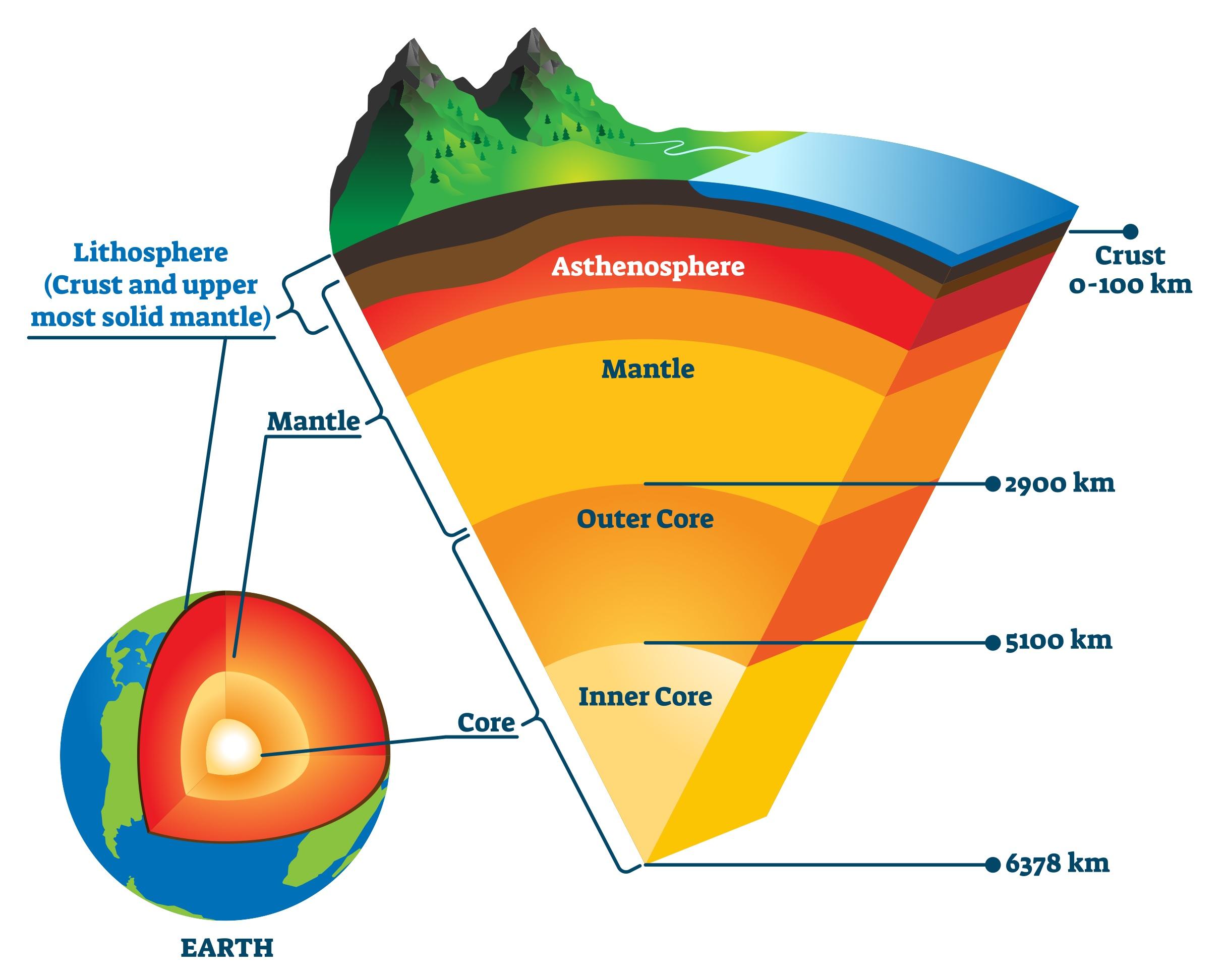Structure of the Earth
When studying plate tectonics, the best starting point is examining the structure of the Earth. The Earth is divided into a series of layers: the inner core, outer core, mantle and crust. Each of these layers has its own chemical and mechanical properties.
The outermost layer of the Earth is the crust. The crust is the thinest layer. There are two types of crust: oceanic and continental.
Continental crust, varying in thickness from 20 to 200 kilometres, is not as dense as its oceanic counterpart. Primarily composed of granite, this crust is indestructible and significantly older than oceanic crust, reaching up to 3.8 billion years.
In contrast, the oceanic crust, with a thickness ranging from 5 to 10 kilometres, consists predominantly of dense basalt. When oceanic crust converges with continental crust at a destructive plate boundary, it descends into the mantle. This is known as subduction. Notably, the oceanic crust is much younger than the continental crust, being less than 200 million years old.
The crust and the upper mantle form the lithosphere, which is solid and brittle and is around 100km thick.
The lithosphere is divided into large sections called tectonic plates. Tectonic plates consist of sections of the lithosphere. The oceanic lithosphere is topped by oceanic crust, and the continental lithosphere is topped by continental crust.
A common misconception is that the mantle is made of liquid magma. In fact, it is made of solid rock.
The section of the Earth’s mantle beneath the lithosphere, extending from a depth of approximately 100 kilometres to 400 kilometres, is known as the asthenosphere. The lithosphere and asthenosphere have a similar chemical composition. However, they have different mechanical properties. The lithosphere is brittle, whereas the asthenosphere is solid but ductile (plastic-like, it will flow over a very long timescale). In the asthenosphere, as depth increases, so does the temperature, reaching at least 1300°C. This temperature is sufficient to melt peridotite (the material that makes up the mantle) under surface conditions. However, the high pressure at such depths prevents the peridotite from melting. As a result, it stays solid yet is ductile, allowing it to flow.
The lower mantle is still ductile but denser due to increased pressure.
The outer core is made up of liquid iron and nickel. The inner core, a solid mass over iron and nickel, forms the Earth’s centre. The temperature of the core is around 5500°C.
Summary
Flashcards
Quiz
True or false? The inner core is solid. Surrounding the inner core is the outer core, then the mantle, which is covered by the Earth’s ‘skin’ or crust.
What are the characteristics of the Earth's inner core?
What are the characteristics of the Earth's outer core?
What are the characteristics of the Earth's mantle?
Which type of crust has the following characteristics? - Thin, 5-10km thick - Dense - Formed from basaltic rock - Recycled at destructive margins - Young, usually less than 200 million years old
Which type of crust has the following characteristics? - Thick, 20-200km - Less dense - Made up mainly of granite - Old, up to 3.8 billion years old
What is the name of the upper portion of the mantle which is a weak layer which can deform like plastic?
What is another name for the Earth's crust?
Look at the diagram. Is it labelled correctly?

What is the name for hot, liquid rock below the Earth's surface?



Share your Results:


